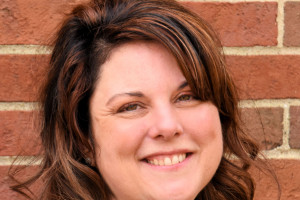Malone Faculty Publishes Research on Illegal Wildlife Trade Education
Rebecca Eagle-Malone, Malone adjunct professor turned Assistant Professor in the department of natural sciences, has always had a research interest.

“I used to do my own book reports on fish and dogs as a kid. Teachers didn’t need to give me assignments, I gave them to myself. I just loved to be outside,” she said. “I really wanted to go into the research side of science, but I say that God shoved me to academia in 2017 and I knew I was supposed to go into education.”
Eagle-Malone has stepped fully into that educational realm at Malone, which she says is unlike anywhere else.
“I love all the classes that I teach because I love all the students. They come in when the door is open and hang out; I joke that I feel like the department mom,” she said. “My stepmom recently passed away, and the outpouring of love and prayers from the students, staff, and faculty made it a lot easier to return to work after something like that. It’s a great community.”
Eagle-Malone’s passion area is environmental science, teaching students about ecological issues and helping them develop a passion for preserving nature. This area was the focal point for Eagle-Malone’s recent research project and journal publication.
In conjunction with a fellow writer and another project manager, Eagle-Malone has published “Understanding Northeast Ohio Participants Perspectives Regarding Illegal Wildlife Trade” in the Journal of Interpretive Research through the National Association of Interpreters.
“The goal of the article is to help zoos and aquariums create effective messaging, like the signs you read on the exhibits, about the illegal wildlife trade to inspire people to take action and do something to combat it,” she said.
The methodology of the paper involved Eagle-Malone and her partners, along with some help from outside organizations including Cleveland Metroparks Zoo, conducting surveys of multiple groups to gauge their knowledge on the subject of illegal wildlife trading.
“We wanted to get two different audience understandings of the subject; one being a traditional zoo visitor, because they’ve made a choice to come to the zoo and maybe they’ve read a bit on the subject, and the second being the general public's understanding,” she said. “So we surveyed people at the Zoo, and we surveyed some folks at the University of Akron where I was a student at the time. We gave them a survey and asked questions like ‘what is wildlife to you?’ We got some very interesting answers with people talking about plants, habitats, and geographical locations.”
Her research was valuable in revealing some of the misconceptions that people have about a topic as pressing as the illegal wildlife trade.
“Then we got deeper into what people know about illegal wildlife trade. For example, some people held the misconception that hunting was part of the illegal wildlife trade. We also read them some scenarios to give them a feel for a variety of animals impacted by the illegal wildlife trade and then asked their feelings about the illegal trades’ impact on those creatures,” said Eagle-Malone. “Those feelings ranged from symbolic ideas to concepts that are the utilitarian values of nature. To follow up, we did a focus group with people from both the Zoo and the UA survey, and we opened it up to 'community pulse,’ a Cleveland Metroparks survey community; That helped us deepen our understanding of the survey results.”
After the research was completed, Eagle-Malone and her writing partner engaged in a two year process of drafting, submission, peer-review, and eventually publication.
The arduous process of research and writing is worth it, says Eagle-Malone, due to the nature of the topic and the location of northeast Ohio.
“The illegal wildlife trade is the illegal trade of animal-related items and animals themselves, and it's a really important topic to prevent the extinction of species and ensure that ecosystems continue to function properly. The Association of Zoos and Aquariums is focusing highly on it right now, and we wanted Cleveland Metroparks Zoo to be a leader in that,” she said. “ It's a huge issue in northeast Ohio because we have all these ports of entry; an international airport and highways that go directly east, west, north, and south all over the country. This directly ties in with the drug trade, arms trade, and human trafficking as well. Usually all of those illegal activities are intertwined together.”
With such important work to be done, Eagle-Malone is pleased with this article’s publication but knows that her work is far from complete.
“This was the first of several sets of research, and this was to determine what people know about illegal wildlife trading and what misconceptions they might have. The next stages are developing and testing the messaging,” she said. “All of this work helps us know what people understand about the trade, and it gives us a sense of the values that people have towards natural environments in addition to their inherent social factors. Thus, we understand people better and understand how they interpret and see the world.”
Eagle-Malone also recognizes the importance of this topic as she researches, teaches, and works from a Christian perspective. An outlook which she hopes to take into the future.
“It also falls in a specific Christian area of concern, caring for Earth and having planetary stewardship and creation care. I’m very interested in following this path. I want to know how people feel about the natural world and inspire more people to care for Creation as it is a gift given to us.”
